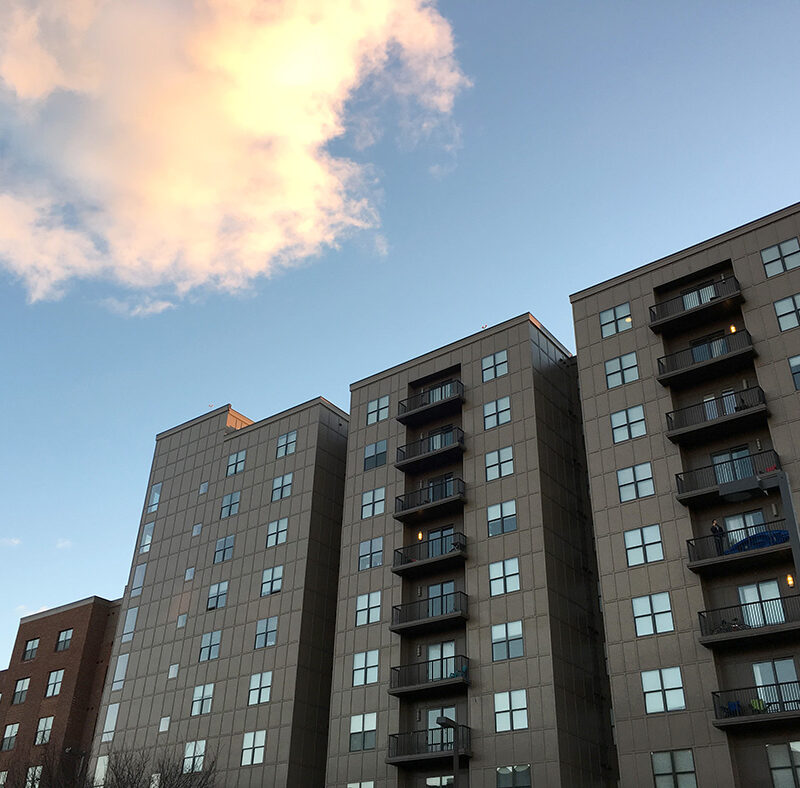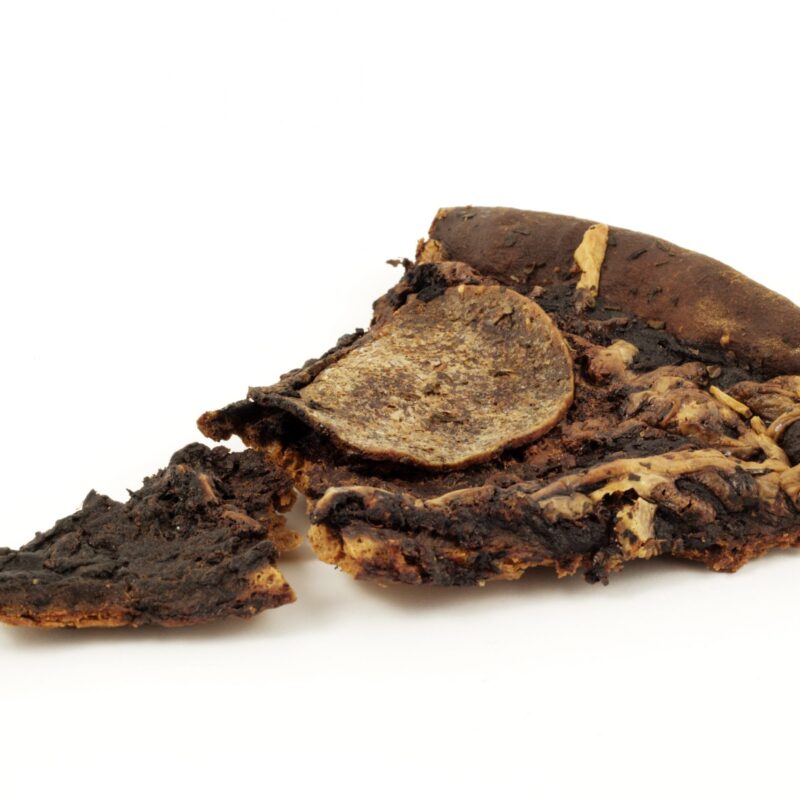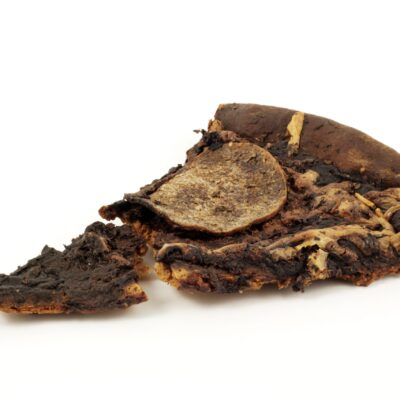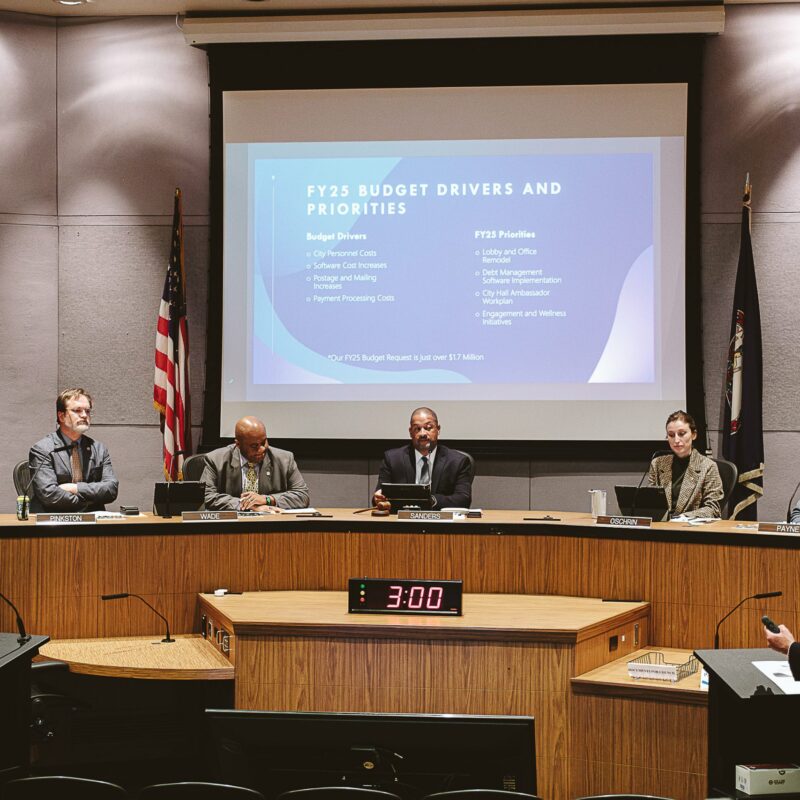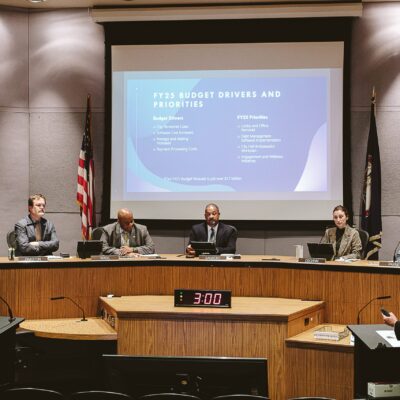Nothing is dead on Davis Avenue, a cozy stretch of brick homes north of the Downtown Mall. However, you wouldn’t know it to look at the massive birds that roost in a group of trees nearby.
|
A mob of turkey vultures roost in trees near Davis Field, north of the Downtown Mall. While Charlottesville and Albemarle have contributed few vulture complaints in the last year, it isn’t for a lack of the massive scavengers. |
“So, you’re here to see the vultures,” says one resident, who spoke briefly with a reporter last week while walking his dog. As many as 100 gather in trees surrounding Davis Field, a soccer pitch on the street. They shellac the ground with their waste, and group together at dusk in a way that’s a touch sinister.
Central Virginia seems to be in the midst of a vulture boom. Last week, Staunton news sources reported that the U.S. Department of Agriculture (USDA) had authorized representatives to kill up to 200 vultures in that city, 40 miles west of Charlottesville. The state Department of Game and Inland Fisheries has begun tagging black vultures that roost at the Dutch Gap boat landing in Chesterfield County, after the birds began to create hazardous work conditions at a nearby Dominion Power plant.
In 2010, the USDA received 224 complaints about vultures from Virginia residents—down from 299 the previous year, but a net increase in five years’ time. According to Dr. Scott Barras, the state director of USDA Wildlife Services, only six complaints of the 224 came from Charlottesville or Albemarle.
“The complaints involved predation to livestock, damage to residential structures, and excessive fecal droppings from vulture roosts,” says Barras by e-mail. He adds that neither the city nor the county required “on-the-ground assistance” last year, and the USDA has no plans for such actions at present time.
Jennifer Gaden, former president of the Monticello Bird Club, also coordinates Charlottesville’s annual Christmas Bird Count—part the National Audobon Society’s efforts to track avian populations in North America. Volunteers help cover a 50-mile radius of Charlottesville and tally both the number of species and total number of birds. “Every year,” says Gaden, “we get hundreds of vultures on our count.”
The Christmas count began in Charlottesville in 1924. That year, volunteers counted seven turkey vultures and no black vultures. The local vulture counts peaked in 1978, when volunteers spotted 987 turkey vultures and 376 black vultures. Results, says Gaden, depend on the skill and number of volunteers, and can vary wildly. After the 1978 peak, the number of turkey vultures spotted in 1981 fell to 126.
This year, 50 volunteers counted 81 species of birds, overall. And while the Christmas counts have a Big Bird-sized margin of error, this year’s count totaled 167 turkey vultures and 103 black vultures.
“Over decades, we’ve seen an increase in vultures, because their range has increased,” says Gaden. “More road kill makes for more food.”
Charlottesville Public Works Director Judy Mueller says she has received no complaints from residents. Perhaps, in their roost off of Davis Avenue, local vultures know how to keep to themselves.
/CDS-2490.jpg)
